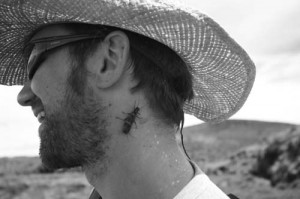The giant-stonefly (Eustheniidae) hatch is a mysterious Tasmanian event. Most anglers would have seen the adult insects running around from time-to-time, but few would have fished a serious hatch. These massive bugs are found right across a huge range of Tasmania’s clear, cool waters, including tributaries of the St Patricks and North Esk rivers, the Meander, Mersey, Liffey and Leven rivers, Arthurs and Great lake, and among the Western Lakes.
These beasts are big: two inches in length (equivalent to a size 6 long-shank hook) is not unusual for these little beasties, appearing from their nymphal stages as winged adults, racing up mid-stream rocks as they hatch into mature adults.
For a number of years I have been studying the hatches of these little-known insects, trying to find the right time, and the best place to hit the hatch. These experiences have shown that late January is the best time for the hatches, during the warmest time of the year. The best locations are the fast and bouldery rivers of the north and north-west, and among the north-western area of the Western Lakes.
With this information in mind, I am off to fish some of Tasmania’s best fly fishing waters in search of the giant-stonefly hatch, one of the rare hatches that brings the biggest of the best fish to the surface. My trip will start in a deep gorge of the Mersey River for two days, followed by four days in the Western Lakes. My fly of choice will be the WMD Hopper, with an orange underbody, tied to a eight-pound tippet. Wish me luck!
If you would like to join RiverFly Tasmania for a day on the rivers, or on a Wilderness Campout to experience the best fly fishing Tasmania has to offer, contact Daniel for more information
For WMD Hoppers and dozens of RiverFly Tasmania fly patterns, visit our online shop

